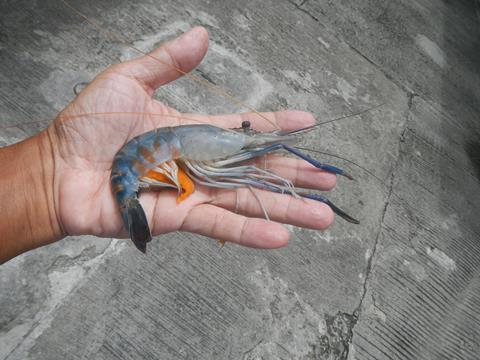What is microRNA? How is it different from normal RNA? How is it important in organisms? In past decades, microRNA was a forgotten key regulator in molecular biology. However, Victor Ambros and Gary Ruvkun were awarded the 2024 Nobel Prize in Physiology or Medicine for their groundbreaking discovery of microRNA. This emerged as an important milestone in the development of microRNA.
MicroRNAs (miRNAs) are pieces of small non-coding RNA transcribed from DNA. They act as post-transcriptional regulators to mediate gene expression by targeting messenger RNAs (mRNAs).
RNA sequencing technology has provided valuable insights into understanding gene function and interaction. By this method, RNA-seq data can be used for database mapping with bioinformatic tools to investigate the function of microRNAs. To date, various studies using transcriptomic analysis have found that different miRNAs are significantly expressed in aquatic animals in response to infectious diseases and changes in the environment. For example, miRNAs associated with immunity, energy metabolism, oxidative phosphorylation, apoptosis, and others, may help aquatic animals fight against pathogens. However, miRNAs have also been found to facilitate the replication of pathogens in their hosts. Therefore, this has encouraged more research into using miRNAs in several applications, such as biomarkers, therapeutic agents, and biosensors.
Strengthening giant freshwater prawn against viral infection
In a 1998 study, no mortalities were observed in cultured giant freshwater shrimps infected with white spot syndrome virus (WSSV ). In subsequent years, other research groups continued to study the susceptibility of these shrimps to WSSV infection through different routes such as through intramuscular injection, oral feeding, and immersion. But again, the shrimps were able to recover and get rid of the virus. The actual mechanism by which they do this is still unknown today. Therefore, we postulated that microRNAs might play an important role in tolerance to WSSV infection in giant freshwater shrimps, by inducing various immune responses and biological processes.
One of the biological processes we inferred that might influence the giant freshwater shrimp to be tolerant to WSSV infection is the oxidative phosphorylation pathway. Numerous transcriptomic analyses have revealed that this pathway is significantly expressed in aquatic organisms during infection. Moreover, it is an important cellular process that generates ATP energy to maintain life.
Thus, the significant expression level of microRNA associated with the oxidative phosphorylation pathway might be a potential biomarker to identify the tolerance effect in aquatic organisms. To explore this, we selected six microRNAs associated with the oxidative phosphorylation pathway and tested them in WSSV-infected giant freshwater shrimps. We found that the microRNAs were significantly expressed during the early stage of viral infection (first 24 hours). This was further validated by investigating their mRNA target expression level, showing that the expression level between microRNAs and mRNAs was mostly in an inverse relationship. Unexpectedly, these microRNAs could be mapped with mRNAs related to other pathways and biological processes through bioinformatic tools, which include cytoskeleton modelling, xenobiotic metabolism, phagocytosis, and protein phosphorylation.
Although more experiments are needed to prove and elucidate their relationships and underlying mechanisms, this discovery suggests that microRNAs play a pivotal role as communicators in the complex gene network for maintaining the survivability of shrimp during viral infection.

MicroRNA enhances the replication of pathogens in aquaculture
Even though microRNAs have been found to trigger various immune responses to fight against diseases, they could also promote host invasion and the replication of infectious diseases.
Various researchers have revealed that microRNAs could act as a key player in facilitating viral infection in aquaculture. Viruses could enhance certain microRNAs and target specific receptors for interfering with the subsequent transcription of immune genes. Zuo and his colleagues identified that miR-10c targets the Toll3 receptor and inhibits its expression, to block the nuclear translocation of interferon regulator factor in whiteleg shrimp (Litopenaeus vannamei) during WSSV infection.
Additionally, Chang’s group also revealed that miR-15b could inhibit antiviral genes and type 1 interferon signalling pathways, accelerating the replication of Siniperca chuatsi rhabdovirus in teleost fish. Not only this, but the virus itself could encode microRNAs to facilitate viral replication in shrimps.
Researchers have found that WSSV-encoded microRNAs might be expressed to control apoptosis, transcription, and signalling pathways in infected shrimps. One of the studies identified that pmo-miR-315 could reduce transcriptional levels of the serine proteinase gene, suppress prophenoloxidase (proPO) activity, and subsequently enhance WSSV replication in shrimps.

Advancement of microRNA technology in aquaculture
Victor Ambros said that “microRNA acts as communication networks among genes, enabling the cells to generate complex structures and functions.” As far as we can see, microRNA expression can be a double-edged sword, either used to fight against pathogens or promote their replication in the host. As numerous recent studies have revealed the microRNA profiling of aquatic organisms in response to pathogens and environmental changes, this is opening a great opportunity to invent new technologies and strategies in the aquaculture field.
MicroRNA is considered evolutionarily conserved, highly specific, sensitive, and differentially expressed, which means that can be used as a biomarker and a selective tool. Recently, researchers used microRNAs as biomarkers for disease detection, reproduction, metabolic states, and thermal and cold tolerance effects in aquatic organisms. For an interesting example, microRNAs have been used as biomarkers to distinguish the male and pseudo-male fish Cynoglossus semilaevis. Hence, these significantly expressed microRNAs might be further used as targets to develop biosensor devices for rapid detection in the future.
In therapeutic agent development, microRNA could function as RNA interference to inhibit or regulate certain specific gene expressions. MicroRNAs have been widely used as therapeutic agents in mammals, for example, to suppress tumours, and treat infectious and cardiac diseases. Despite this, microRNAs are rarely used as therapeutic agents in aquaculture. Interestingly, Cui’s group fed shrimps with other shrimp containing bacteria expressing miR-34, to inhibit WSSV infection by targeting WSSV genes. Subsequently, they tested miR-34 in mice injected with breast cancer cells and fed the mice with cooked shrimp muscles containing miR-34-expressing bacteria every two days. They found that miR-34 could induce anti-tumour activity in breast cancer mice. This apparently shows the ability and power of microRNA in a treatment application.

MicroRNAs as a biosensor
As the microRNA field gradually advances, researchers have made a breakthrough by utilizing microRNAs to invent biosensors in a disease detection platform. Various researchers have integrated technologies such as the electrochemiluminescence (ECL) technique, surface plasmon resonance, the hybridization chain reaction, and DNA nanomachine-based homogeneous electrochemistry. One particular study used antimonide quantum dot (AMQD), aromatic heterocyclic dyes, and single-walled carbon nanotubes (SWCNTs). Surface-enhanced Raman spectrum (SERS) and others have also been used in microRNA detection related to various diseases.
However, the microRNA-based biosensor is something that has never been seen in aquaculture before. Despite that, after unremitting efforts, researchers finally developed a disposable microRNA biosensor based on dual-role polymer-dispersed silver nanowires for detection of viral hemorrhagic septicemia virus (VHSV) infection in fish olive flounder.
The team used miR-15-5p, which plays a crucial role in inflammatory responses such as host invasion and viral replication, as a target to detect VHSV infection. This microRNA was also found to be induced in the response to Japanese encephalitis virus, SARS coronavirus 2, and influenza A virus. They utilized a DNA-RNA hybrid method by immobilizing capture DNA probes on the surface of polymer-dispersed silver nanowires to detect the microRNA target. The hybridization is then detected and monitored by square wave voltammetry techniques. Therefore, this discovery encourages more research by collaboration with engineering and molecular biology experts to develop biosensors for detecting the other important microRNAs in aquaculture.
In summary, although microRNA is tiny in structure, it could have a huge impact on understanding life and unlocking the advancement of technologies. The contribution of RNA-sequencing technology and bioinformatics will provide a better comprehension and broader knowledge of microRNAs. Therefore, having comprehensive microRNA transcriptomic data in aquaculture offers real diagnostic and therapeutic benefits.
This article is based on a review published in Molecules. Read the full article here.









No comments yet